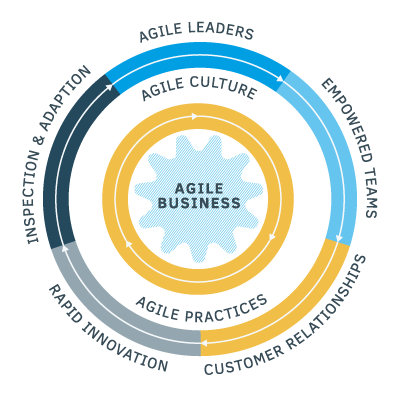Agile Business: Unlocking Success Through Agility in Leadership and Business Practices
Introduction: Navigating Uncertainty with Agile Approaches
Today’s business landscape is characterized by constant change and fierce competition. To thrive in this environment, organizations must embrace agility across all levels. Agile Business, more than a methodology, is a mindset and a set of principles that prioritize adaptability, flexibility, and continuous improvement. It empowers businesses to respond quickly to market shifts, customer demands, and technological advancements, leading to sustainable success.
Agile Leadership: Fostering a Culture of Agility
Successful Agile Business implementation hinges on strong leadership. Agile leaders create environments where agility flourishes. They:
- Promote collaboration and cross-functional teamwork.
- Empower employees to make decisions and experiment.
- Value feedback and continuous learning.
- Model agile behaviors and mindsets.
Business Agility: Key Principles and Practices
Business agility encompasses a set of strategies and practices that enhance an organization’s ability to adapt and thrive in dynamic environments. Key elements include:
- Customer Focus: Prioritizing customer needs and delivering value iteratively.
- Iterative Development: Breaking down work into smaller cycles for faster feedback and adaptation.
- Collaboration: Fostering cross-functional teams and breaking down silos.
- Experimentation: Embracing continuous learning and innovation.
- Transparency: Promoting open communication and information sharing.
Benefits of Agile Business: Reap the Rewards of Agility
Organizations that embrace agility reap significant benefits, including:
- Increased responsiveness to market changes and customer needs.
- Faster time-to-market for new products and services.
- Improved employee engagement and productivity.
- Enhanced ability to innovate and adapt to disruptions.
- Stronger competitive advantage and long-term success.
Conclusion: Embracing Agility for Thriving in a Dynamic World
In conclusion, Agile Business, through agile leadership and business agility, is essential for navigating today’s unpredictable business landscape. By fostering a culture of agility, embracing iterative practices, and empowering employees, organizations can achieve unprecedented levels of responsiveness, innovation, and success. Agile Business is not a passing fad; it’s a fundamental shift in how businesses operate and thrive in a world of constant change.
